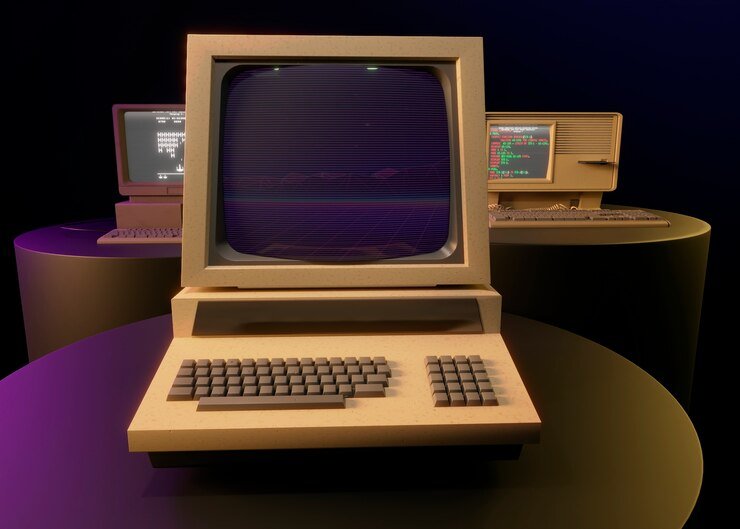The name “Philip Reyes Pentium 4” sparks curiosity, blending the identity of an individual and a historic piece of computing technology. The Pentium 4 processor, a groundbreaking innovation from Intel, marked an era of rapid advancements in computing. Meanwhile, Philip Reyes symbolizes the tech-savvy enthusiasts who helped shape how this technology was utilized, explored, and celebrated. This article delves into the legacy of the Pentium 4 processor, its significance in the tech world, and the influence of individuals like Philip Reyes who championed its capabilities.
1. The Era of the Pentium 4 Processor
Launched in November 2000, philip reyes pentium 4 was a revolutionary leap in microprocessor technology. It was built on the NetBurst microarchitecture and introduced several innovative features that set it apart from its predecessors. The Pentium 4 was designed to meet the increasing demands of computing, from multimedia applications to high-performance gaming and professional workloads.
The processor introduced clock speeds that exceeded the limits of earlier generations, with the initial models reaching up to 1.5 GHz and later versions surpassing 3 GHz. This was a significant milestone in computing, as it marked a shift toward higher-speed processors designed for power-intensive applications. The Pentium 4 also introduced technologies like Hyper-Threading, which allowed for better multitasking and improved efficiency in handling simultaneous tasks.
While it received mixed reviews due to heat and power consumption issues, the Pentium 4 played a crucial role in advancing computer processing capabilities. It became a household name and remained a popular choice for consumers and businesses alike throughout its production life.
2. Philip Reyes: A Technophile and Advocate
Philip Reyes represents the countless enthusiasts and professionals who embraced the Pentium 4 and explored its potential to transform personal and professional computing. As a technophile, Philip Reyes was known for his deep interest in computer hardware and his ability to optimize systems for peak performance.
Reyes gained a reputation for educating users on how to get the most out of their Pentium 4-powered systems. From providing guidance on overclocking to offering advice on compatible hardware configurations, he was a trusted voice in the tech community. His passion for sharing knowledge helped many users understand the intricacies of their systems and unlock the full potential of the Pentium 4 processor.
Through online forums, blogs, and local tech meetups, Reyes became a beacon of support for those navigating the challenges of upgrading their systems during the early 2000s. His contributions to the tech community highlight the importance of individuals who bridge the gap between technology and its users.
3. Exploring the Pentium 4’s Features and Innovations
The Pentium 4 brought a host of innovations that redefined how computers performed and interacted with software. One of its key features was the introduction of the 400 MHz front-side bus (FSB), which allowed for faster data transfer between the processor and memory. This enhancement made applications more responsive and improved overall system performance.
Another hallmark was its Hyper-Threading technology, first introduced in the later models of the Pentium 4. Hyper-Threading allowed the processor to handle multiple threads simultaneously, effectively simulating two processors working together. This capability was groundbreaking at the time, providing smoother multitasking and improved performance in multithreaded applications.
These features catered to both casual users and professionals who required robust performance for their creative and technical work.
Despite its innovations, the Pentium 4 faced criticism for its high power consumption and thermal output. Users often had to invest in additional cooling solutions to keep their systems stable. However, these challenges did little to diminish its popularity, as its performance and capabilities remained unmatched in its time.
4. Philip Reyes and the DIY Computer Movement

Philip Reyes was a key advocate for the do-it-yourself (DIY) computer-building community, which thrived during the Pentium 4 era.
Reyes championed the idea of DIY computing, emphasizing the freedom it provided to users in customizing their systems. He offered step-by-step guides on choosing motherboards, memory modules, and cooling systems that were compatible with the Pentium 4. His advice was invaluable for first-time builders, helping them avoid common pitfalls and achieve optimal performance.
In addition to hardware guidance, Reyes shared tips on software optimization. His holistic approach to system optimization made him a respected figure in the tech community.
5. The Legacy of the Pentium 4 and Its Enthusiasts
It marked an era of rapid technological advancements and set the stage for the high-performance processors we rely on today.
The legacy of the Pentium 4 is also reflected in its influence on processor design. This enduring relevance speaks to the processor’s innovative design and forward-thinking architecture.
6. Looking Ahead: Lessons from the Pentium 4 Era
The story of the Pentium 4 and individuals like Philip Reyes offers valuable lessons for today’s tech enthusiasts and professionals.
Conclusion
The name “Philip Reyes Pentium 4” embodies the intersection of groundbreaking technology and the passion of individuals who bring it to life. The Pentium 4 processor revolutionized computing during its time, and enthusiasts like Philip Reyes ensured its legacy by empowering users to explore its full potential.
